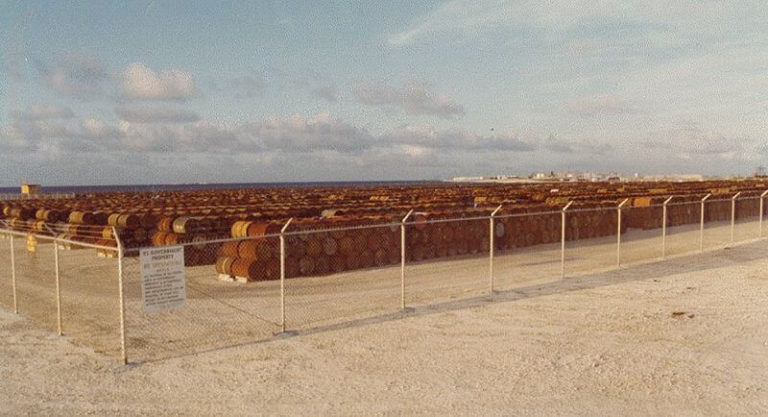Agent Orange Locations: Panama and Kelly Air Force Base

CCK Law: Our Vital Role in Veterans Law
Agent Orange is an herbicide agent that was used by the United States during the Vietnam War. Specifically, Agent Orange is a 50/50 mixture of two kinds of herbicide agents: 2,4-D and 2,4,5-T. Agent Orange also contained the contaminant TCDD, as a byproduct of its production, which is the most toxic of all dioxins. During the war, Agent Orange was mainly sprayed in one of four ways: (1) C-123 aircraft were used to spray herbicides over the jungles of Vietnam during Operation Ranch Hand; (2) helicopters were used to spray smaller areas; (3) buffalo turbines (i.e. truck-mounted sprayers) were used to spray roadsides and perimeters; and (4) hand-held sprayers were also used as a method of spraying herbicides.
Agent Orange in Panama
During the Vietnam War, thousands of veterans served in the Panama Canal Zone. Since then, many of those veterans have filed VA disability claims for illnesses related to Agent Orange exposure. However, VA does not currently recognize Panama as a location where herbicide agents were used. Therefore, Vietnam era veterans who served in Panama are not afforded VA’s presumption of exposure, and must prove they were exposed and that their disabilities are caused by Agent Orange in order to receive service-connected compensation.
Recently, the United States Government Accountability Office (GAO) released a report focusing on the actions needed to improve the accuracy and communication of information regarding testing and storage locations of Agent Orange outside of Vietnam. In this report, GAO confirms that the Military Sea Transportation Service, which directly chartered merchant vessels to carry herbicides during the Vietnam War, traveled through the Panama Canal. The herbicides, such as Agents Orange, Blue and White were stored vertically on pallets in compartmented internal storage spaces on the vessels. The following vessels are known to have traveled through the Panama Canal while carrying herbicide agents: SS Gulf Shipper, SS Aimee Lykes, SS Buckeye Atlantic, and SS Overseas Suzanne. While there is documentation demonstrating that these ships passed through, there is no evidence to show that herbicide agents were offloaded in Panama.
Nonetheless, there are other resources that support the presence of herbicides in Panama. Specifically, a December 1976 Environmental Sampling Report in the Panama Canal Zone shows that chlorophenoxy herbicides were detected in the soil samples from the Canal Zone. Importantly, that type of herbicide is recognized by the Centers for Disease Control and Prevention as a 2,4,5-T based herbicide, the same as Agent Orange. Additionally, in a report on the “14th Annual Meeting of the U.S. Army Corps of Engineering Aquatic Plant Control Research Program” there is a section concerning “Aquatic Plant Control Activities in the Panama Canal Zone”. This section notes the initiation of large-scale testing of 2,4-D on water hyacinth began in June of 1978. 2,4-D is another component of Agent Orange that was present in Panama.
Agent Orange at Kelly Air Force Base
Kelly Air Force Base (AFB) was located in San Antonio, Texas and at the time of its closure in 2001, was the oldest continuously-operating flying base in the United States Air Force. In 1938, information was released indicating that toxic waste had been disposed into an uncovered pit from 1960 to 1973. The waste contained toxins, such as benzene, and created plumes of contaminated groundwater. However, this was not the only form of potential exposure that took place at Kelly AFB as documentation also reveals the base was a storage site for Agent Orange and its components.
Specifically, the above-mentioned GAO report shows that quantities of the two components of Agent Orange were stored at Kelly AFB until 1972 before they were transferred to the United States Department of Agriculture for brush control projects. The reported amounts included 106,260 gallons of 2,4-D and 38,940 gallons of 2,4,5-T. Records also show that approximately 173,910 gallons of Agent Blue, another rainbow herbicide, were stored at Kelly AFB. Furthermore, GAO reviewed several sources provided by DoD and VA officials, and identified multiple examples of inaccurate and incomplete information on DoD’s list, to include the omission of specific testing and storage locations, such as Kelly AFB. GAO found examples of shipments of herbicides to Kelly AFB where Agent Orange components were stored following the cancellation of tactical herbicide contracts.
GAO also obtained original DoD reports and command histories that provided additional operational details about the procurement, distribution, use, and disposition of Agent Orange and its components. According to an Office of History, Air Force Logistics Command, monograph, the command directly responsible for managing Agent Orange was the Directorate of Aerospace Fuels at the San Antonio Air Material Area located at Kelly AFB. Importantly, Kelly AFB was a sub-component of the U.S. Air Force Logistics Command during the Vietnam War. GAO concluded there is extensive documentation on herbicide management between 1966-1973 at Kelly AFB.
Service Connection for Veterans who Served in Panama or at Kelly AFB
Veterans who served at either of these locations are not entitled to presumptive service connection unless they can establish proof of exposure and they have a disability subject to presumptive service connection. They can also apply for VA disability benefits on a direct basis. To do so, they must establish 1) a diagnosis of current medical condition; 2) provide proof of exposure during service; and 3) a nexus (i.e. a link) between their claimed condition and their exposure to herbicide agents. VA should review these claims on a case-by-case basis.
About the Author
Share this Post
